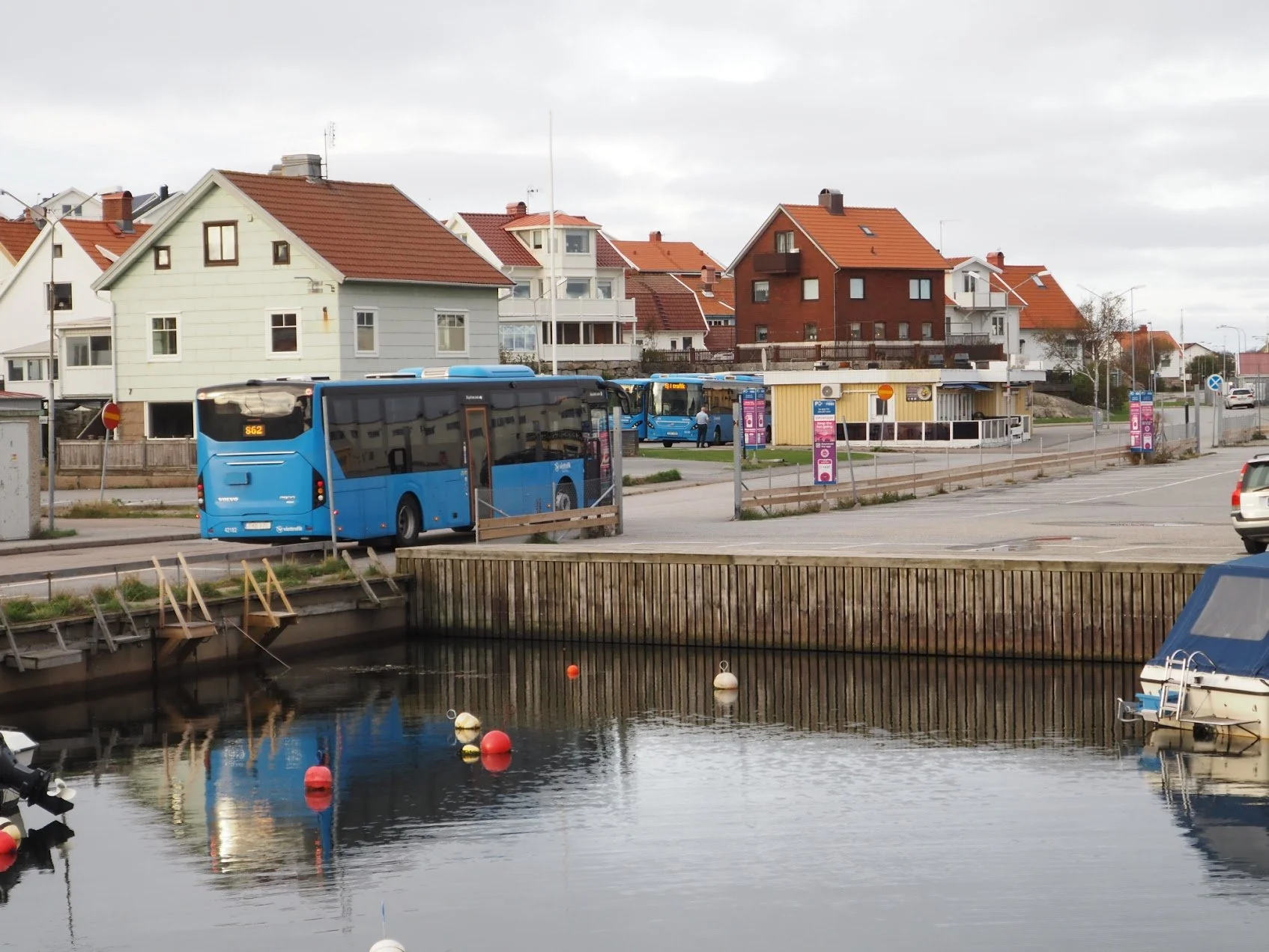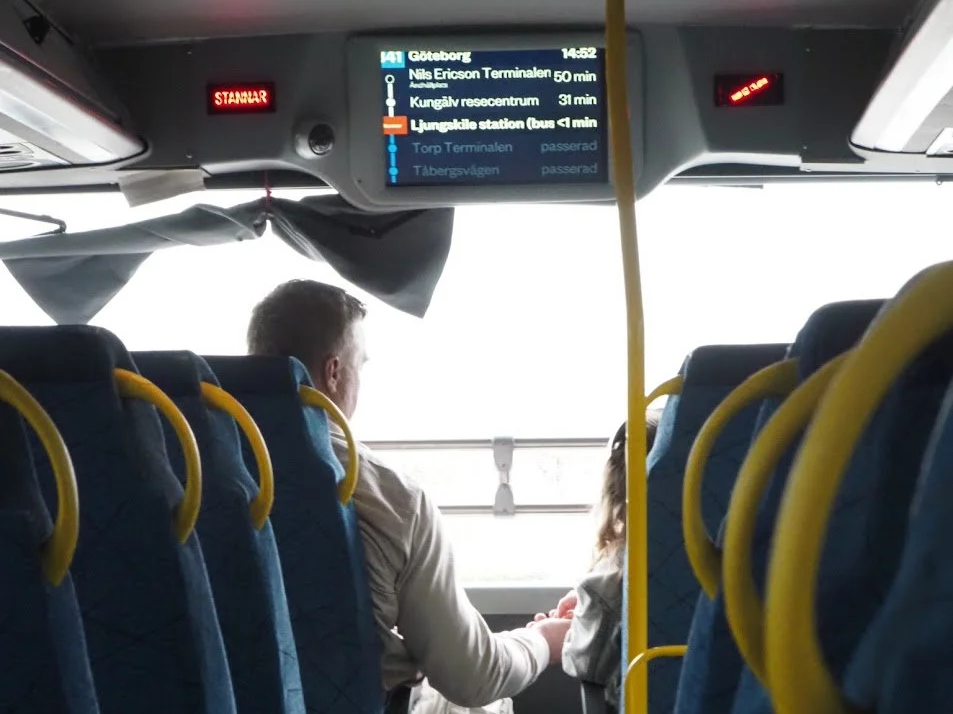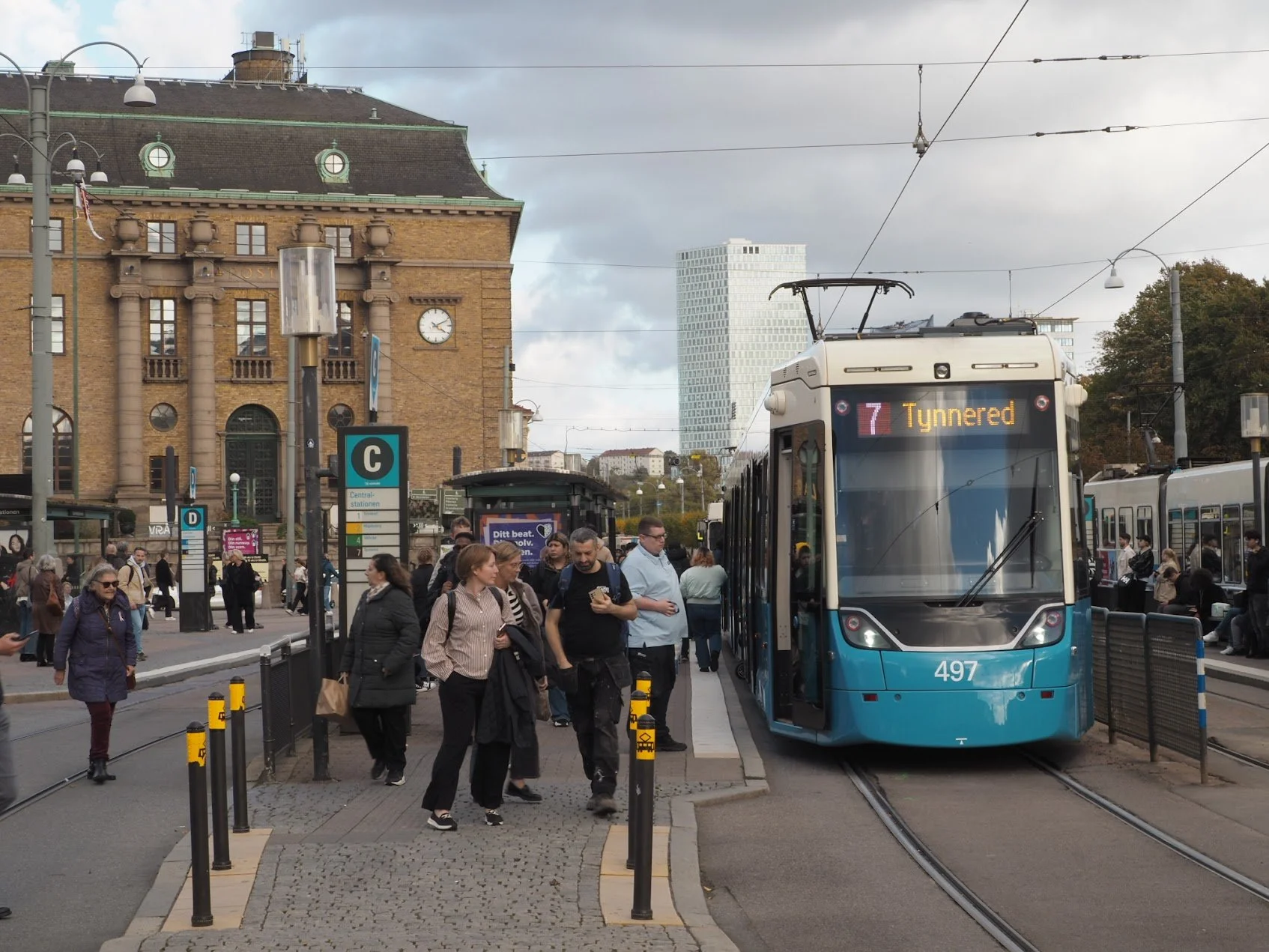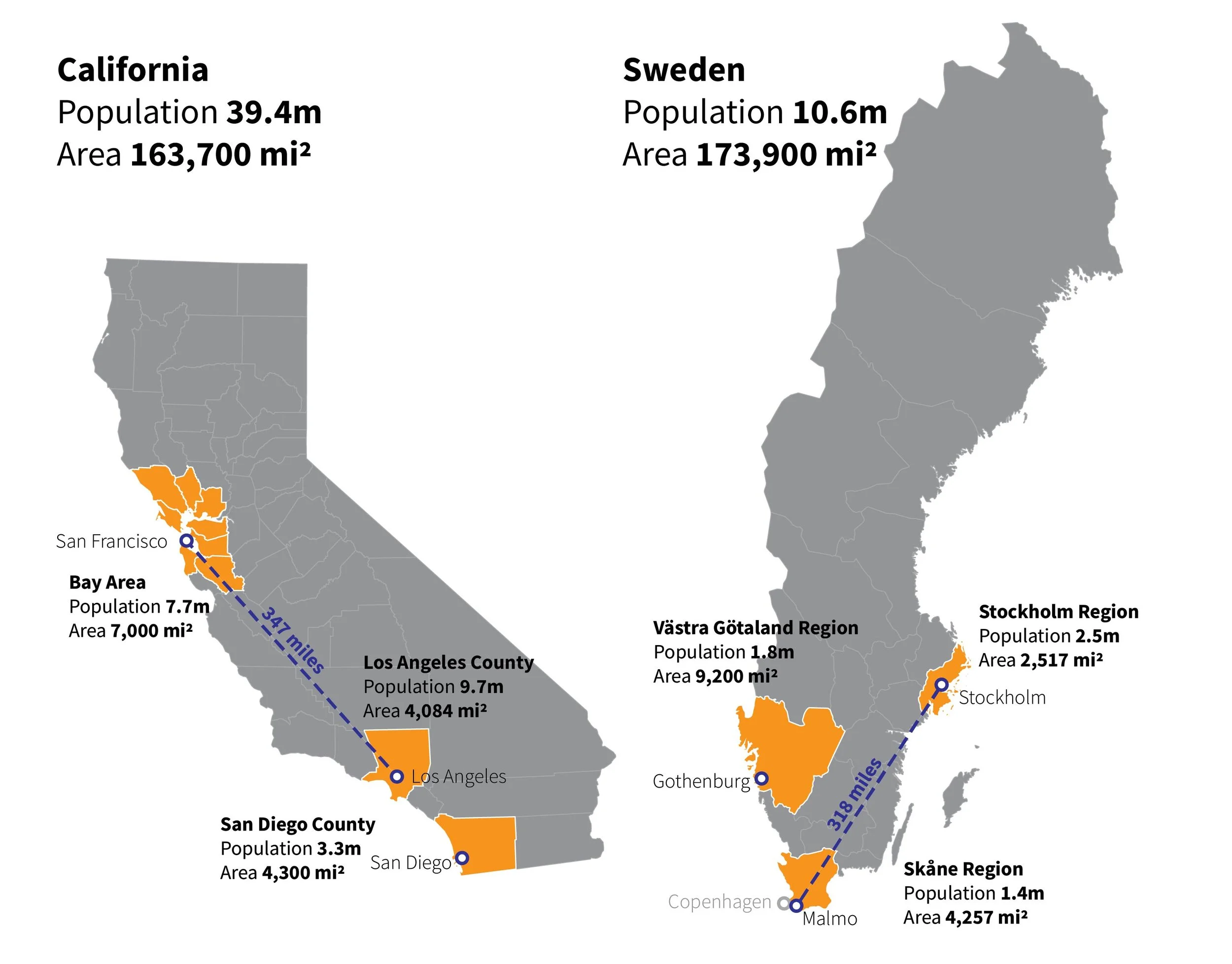Timed Transfers at Ikea: First Impressions of Sweden's Connected Public Transportation Network
The town of Smögen has about 1,200 year-round inhabitants, but enjoys nearly hourly bus service most days of the week, connecting it into major hubs like Uddevalla on timed schedules.
Many visitors to Sweden likely have their first experience with public transportation aboard the sleek Arlanda Express train, which whisks travelers from Stockholm’s airport to the city center in just 18 minutes. However, as someone visiting Sweden to study what lessons its public transportation system might offer California, I planned a less conventional first journey — a nearly four hour bus trip from Oslo, Norway, to Smögen, a small Swedish seaside town, requiring a transfer between agencies at a suburban retail center (yes, with an Ikea).
A passenger peacefully sleeping aboard the Vy intercity bus.
My journey began with planning an itinerary on Google Maps, which led to me purchasing a reserved-seat ticket for the first leg on a long-distance Vy bus — one of Scandinavia’s major private operators. The luxurious double-decker departed Oslo’s central bus terminal on time, and I appreciated the driver’s friendly announcement reminding passengers to keep the restroom clean and avoid eating hot, smelly food while the bus was in motion. The Wi-Fi worked, the seats were spotless and comfortable (many passengers snoozed), and we arrived on time at Torp Terminalen in the town of Uddevalla — my transfer point.
Passengers waiting to transfer at Torp Terminalen (with an Ikea in the background)
Despite being in the middle of a suburban retail area sandwiched between a giant parking lot and a busy freeway, the sprawling Torp Terminalen was a hive of transfer activity. Within minutes of our arrival, several large blue buses operated by the regional provider Västtrafik appeared, unloading dozens of passengers. Most transferred to other buses to continue their journeys — clearly, this was a major hub where timed meets were deliberately built into the routing and schedule. Many passengers, like me, had luggage and made use of the storage compartments accessible on the sides of the buses.
Screens showing upcoming stops and arrival times aboard the bus to Gothenburg.
After finding the right stop for Bus 860 to Smögen, I waited less than 10 minutes before my bus, which only ran once an hour, arrived right on time. The Västtrafik app which I had downloaded helpfully indicated which of the 11 platforms I should wait at. I also paid through the app, which generated a QR code that I scanned when boarding. As we drove through the countryside on this second 90-minute leg, I gazed out the window at the beautiful fall colors and charming rural villages before finally arriving in Smögen right on time.
Tram platform near Gothenburg’s Central Staiton.
My three-hour transit journey the following day from Smögen to Gothenburg was similarly predictable and pleasant. My hourly bus showed up on schedule; I could relax knowing that upcoming stop information and estimated arrival times were clearly displayed on a digital screen. Upon arriving at Gothenburg’s Central Station, my “Zone ABC” ticket even allowed me to transfer to the local tram without paying again. Gothenburg’s blue trams, also operated under the Västtrafik brand, shared the same wayfinding and platform-labeling conventions as the buses, reinforcing a sense of consistency and trust in the system. I arrived on time, relaxed, and eager to explore more of Sweden’s transit network. All in all, a pretty seamless transit experience!
So what brought me to Sweden, of all places, to study public transit?
Sweden undoubtedly has some of the best public transit in Europe – it’s transit mode share in 2019 was 19.3% of all trips nationwide — roughly five times higher than California’s 3–4%.
My trip here builds on a 2023 knowledge exchange program that Seamless Bay Area co-organized, the Sweden–California CoLab, which brought together Swedish and Californian public transportation professionals to learn about trends and exchange experiences in emerging mobility. During the Swedish delegation’s visit to California, they emphasized that a key factor in their success was how transit network was organized and governed to deliver regionally coordinated, seamless service, across urban, suburban, and rural areas. See our blog summary of the presentation they gave at a well-attended Transit Month event.
With support from Vinnova, the Swedish Innovation Agency, the California–Sweden partnership has been expanded to establish a Professional Exchange Program (PEP) between both countries. As the first U.S. participant in the program, I am visiting Sweden’s three largest regions — Gothenburg, Stockholm, and Malmö — to meet with state, regional, and local officials, focusing on three key research questions:
Regional coordination: How do Sweden’s regions successfully deliver integrated, customer-focused transit service across modes, within and between regions?
Service contracting for operations: How does Sweden’s practice of using service contracts to operate most bus and rail in the country impact the cost and effectiveness of transit – and is this something California may wish to consider?
Cost-effective project delivery: How has Sweden managed to achieve relatively cost-effective capital projects, and what can California learn from Sweden’s experience?
While Sweden and California differ in many ways, one reason Sweden provides a compelling comparison for California is because of its vast geography and relatively sparse population. The country is slightly larger than California but has only a quarter of its population — making it even more challenging to serve efficiently with longer distance transit. Like California, Sweden has large distances between major cities and expansive regions combining urban, suburban, and rural areas. The distance between Stockholm and Malmö is similar to that between San Francisco and Los Angeles.
The greater Gothenburg region, Västra Götaland, is in fact geographically larger and far less populated than California’s nine-county Bay Area, yet it boasts an expansive, seamlessly integrated regional rail, bus, and ferry network connecting communities of all sizes throughout the region.
As transit agencies and regions in California seek new funding to address budget deficits, and as the state also seeks to build out an ambitious state intercity rail and transit network, Sweden may offer valuable lessons on reforms that could help manage costs while improving customer outcomes. I don’t expect everything I learn here to be directly applicable — yet, as with my past investigations in Switzerland, Taiwan, and Korea, I hope documenting what works (and what doesn’t) in Sweden can serve as a useful resource for those pushing for better transit in California and across North America.






